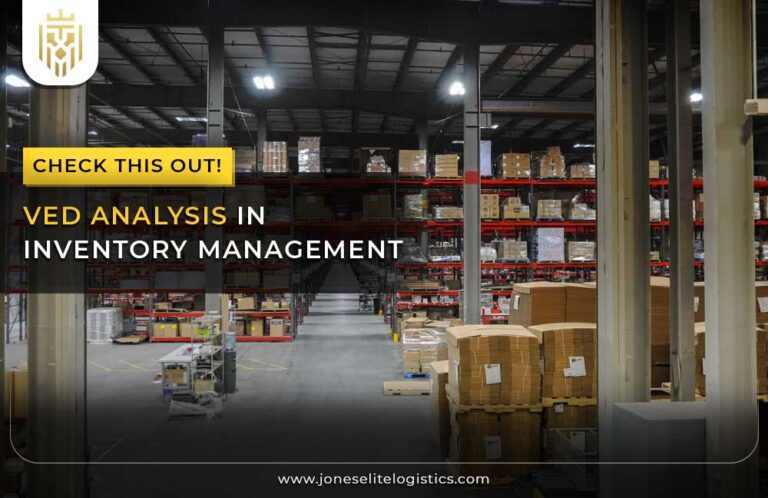What is Agile Supply Chain?
An Agile Supply Chain can be described as a highly sensitive and efficient supply chain that can respond and adjust to new market patterns and trends. It concentrates on speed, flexibility, and effectiveness to enable businesses to meet customer demand. This strategy helps to eliminate long lead times and high inventory levels, which goes well with organizations where customer demand is unpredictable. Agile supply chain management also involves fostering collaboration with supply chain partners, streamlining the supply chain process, and enhancing structural agility to prevent supply chain disruption.

Why agility is important for the supply chain?
Being responsive in supply chains specifically augments the ability to cope with market risks and changing customer demand. It helps organizations to promptly serve clients’ needs, decrease lead time, and sustain market superiority. A flexible environment in the supply chain increases customer satisfaction, and the company’s profitability, and mitigates risks associated with supply chain disruption and fluctuating demand patterns. By embracing agile supply chain practices, companies can manage inventory levels efficiently and avoid excess inventory.
Characteristics of Agile Supply Chain:
Agility is hence defined as a supply chain’s capacity to be adaptable, timely, and productive. Some of the applications are quick responses to customer demand signals, automatic data sharing, and integration across the entire supply chain. Effective inventory management and supply chain visibility are vital to ensuring that businesses can adjust swiftly to evolving customer expectations. These practices allow businesses to avoid excess inventory and keep logistics providers informed of changing demands.
Agile Supply Chain Strategies:
There are some key concepts that agile supply chain strategy entails thereby stressing more flexibility, collaboration, and use of technology. Tactics like maintaining buffer capacity, using real-time data, and fostering strong relationships with supply chain partners are essential. Incorporating agile methodology helps businesses prepare for supply chain variability, and agile practices such as just-in-time production and continuous improvement processes support dynamic market conditions.
Aligning Processes:
Process coordination is all about synchronizations where all the supply chain activities must be in one flow. This also comprises aligning production, procurement, as well as, distribution activities to meet the firm’s objectives of efficiency and flexibility. It is, therefore, evident that the alignment of processes in an organization will help in managing inventory levels, reducing bottlenecks, increasing communication, and subsequently increasing the flow of activities in the supply chain.

Online Integration:
Digital transformation plays a pivotal role in agile supply chain management, leveraging cloud technology, IoT devices, and analytics to provide real-time visibility into customer demand and inventory levels. Accessibility increases awareness, increases the rate of decision-making and the supply chain becomes quicker and more dynamic, enhancing their ability to meet customer demand and respond to disruptions.
Shared Supply Chain Duties:
Special shared responsibilities deals with the division of roles between the supply chain members to improve supply chain performance. This encompasses areas in coordinating the supply chain planning process and sales forecasting as well as controlling inventory. This is because when supply chain partners split the work, they can take advantage of each other’s specialty, creating streamlined processes that are more responsive to market needs.
Market Awareness:
In an agile supply chain, market awareness means staying informed about shifts in customer demand and market conditions. This entails constant evaluation of the information within the environment to make predictions on the next course of action for the supply chain processes. Market sensitivity helps the business to track the changes in customer expectations and avoid being outcompeted.
Lean Supply Chain Vs Agile Supply Chain:
A Lean Supply Chain is designed to remove waste and operate efficiently by using standard processes and always endeavouring to enhance more. This is the case because it is normally associated with objectives of cost decrease and increased efficiency. An Agile Supply Chain, in contrast, copes with the changing environment with equal or even greater efficiency. However, lean focuses on the side of reduction in time and expenses, and the other hand, there is the concept of agile that focuses on the speed of work. The two approaches can be used side by side depending on the prevailing market conditions and the goals and standards of the business.
How to create an agile supply chain model?
Building an agile supply chain requires some important steps which were explained as follows firstly, building an efficient model for the rapidly changing market environment and the customer demand. These include awareness of present activity, digital adoption, improved training of personnel, long-term cooperation with suppliers, and advancement of the ongoing improvement process.
Understand Your Current Operations:
Identifying the existing status of your operations is the first process towards adopting the ideal agile supply chain management process. This entails reviewing current procedures, finding areas of congestion, and defining the capabilities and vulnerabilities of a company’s supply chain. When organizational workers understand the present conditions, it becomes easy to identify the areas of strength, weakness, opportunities, and threats to improve adaptability.
Embrace Digital Transformation:
The statement focuses on the digital aspect which is highly relevant to forming an efficient supply chain. This includes the use of IoT, AI, and cloud computing to achieve near real-time supply chain visibility and real-time automation. Certainly, the use of digital tools for management helps to make the right decisions, improve communication processes, and increase the overall effectiveness of the supply chain. Digital transformation also supports operational agility, allowing businesses to scale and adapt quickly.

Invest In Workforce Training:
Training and development of agile supply chain practices incline that stakeholders are qualified to support the circulation of a flexible supply chain. Training includes new technology, improvement of processes, and the overall agile methodology. A competent population is always in a position to respond to the change, especially in the strategy implementation process, as well as the overall improvement process
Develop Strong Supplier Relationships:
Engaging suppliers in a frequent and friendly manner is decisive in any supply chain that needs to be agile. Building strong, long-term relationships with supply chain partners can improve overall communication and therefore allow for quicker identification and solving of issues. Thus, keeping a strong relationship with suppliers leads to the business’s ability to manage and design its supply chain network to be more responsive to changes in the market.
Implement A Continuous Improvement Strategy:
Constant improvement of the operations is necessary to guarantee a flexible and agile supply chain. This encompasses constant checking of activities with the view of revising them so that they can become more effective and sensitive to change as it occurs. All these can be underlined in the means of implementing CI methods like Kaizen, Six Sigma, and PDCA, the ability to maintain the flow of constant and sustainable improvement.
Benefits of Supply Chain Agility:
The following are some benefits of implementing agile supply chain management that can help businesses work effectively in aggressive environments. Some advantages consist of enhancing customer satisfaction, being able to adjust production and distribution more easily, better coverage of risks and uncertainties, eco-friendliness, and adoption for internationalization. These factors help to create a quicker, less costly, and more effective and efficient supply chain.
Improved customer satisfaction:
An adaptive supply chain works towards customer satisfaction as it can effectively respond to changes in demand and consumption patterns. Shorter order-lead time, customs and faster order deliveries enhance customer satisfaction. This responsiveness is beneficial for constantly empowering customer loyalty and can cause increased sales along with extra market share.

Increased flexibility in production and distribution processes:
This means that the companies can flexibly adjust their operation to produce and deliver where needed most and when needed most. This includes the action of increasing or decreasing a certain product line, the transferring or altering between various brands or product lines, and the changing of the distribution channels. Flexibility causes costs to be lower, and the amount of wastage to be used to be lesser, with the delivery of products on time as well.
Enhanced ability to manage risk and uncertainty:
The typical supply chain management strategies help facilitate an agile supply chain, and this is good for handling risks such as supply disruptions, fluctuating markets, and other forms of uncertainty. On the same note, companies should be prepared and reactive to ensure that they put into practice the contingency plans and to continual operational disruption and its effects. Overall, it enhances the ability of the supply chain to be stable for quite a long duration of time.
Environmental Sustainability:
Environmental sustainability is easy to implement in an agile environment since it simplifies resource utilization and cuts waste. They combined just-in-time production, efficient logistics, and environmentally friendly packing in a bid to reduce the impact they had on the environment. Evaluating the correlation between sustainability performance and operational efficiency, it was found that integrating agile supply chain practices with eco-friendly strategies, businesses can reduce their environmental impact while meeting customer demand.

Global Expansion:
The flexibility offered by agile supply chain management means it is well suited for expansion across the globe because companies can make changes for one market to fit another. One of the advantages that help to arrange operations on the international level is the availability to respond quickly to the local requirements, control the logistics, and meet the necessities of the region. Operations flexibility is a way through which organizations can expand their operations and tap into new markets worldwide.
FAQs
1) What is an agile supply chain?
An agile supply chain is designed to respond quickly and effectively to changes in customer demand while maintaining optimal inventory levels and strong relationships with supply chain partners.
2) What are the characteristics of an agile supply chain?
Some such elements are flexibility, quicker changes to the market conditions, real-time exposure of data, well-connected partners, and the usage of cutting-edge technology.
3) What are the benefits of supply chain agility?
A few of the advantages include customer satisfaction, organizational flexibility, managing risks, environmental preservation, and foreign markets’ sustenance.
4) What are the agile supply chain strategies?
They include managing buffer capacity, processing real-time data, developing good relations with suppliers, going in for a just-in-time operation, and practicing constant improvement.







